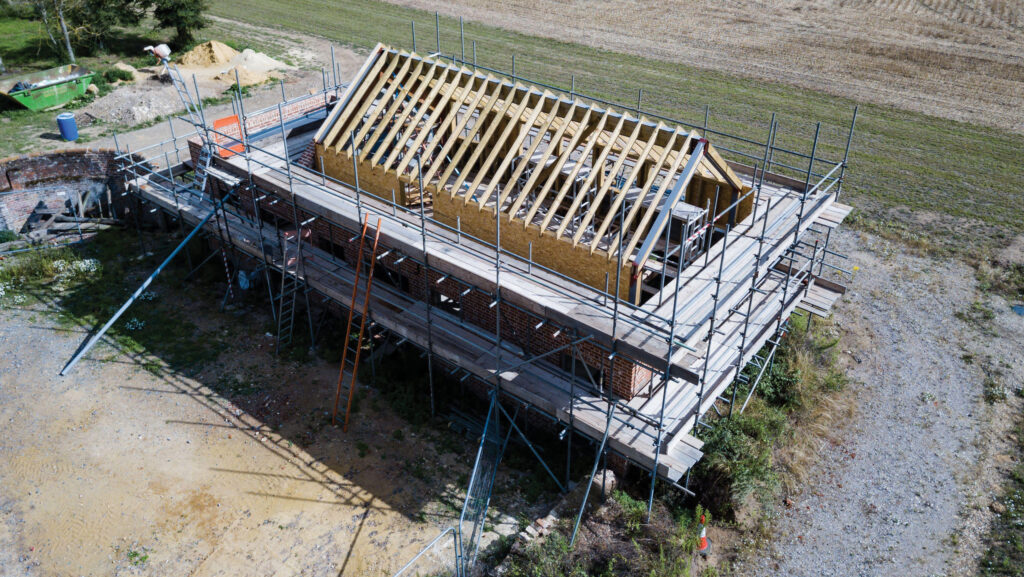Business Clinic: Can council add agricultural occupancy condition?
 © Simon Collins/Alamy Stock Photo
© Simon Collins/Alamy Stock Photo Whether it’s a legal, tax, insurance, management or land issue, Farmers Weekly’s Business Clinic experts can help.
Here Nicola Quick, associate partner, Carter Jonas Rural advises on a residential permitted development issue.
See also: Business Clinic: how should we organise farmworker’s tenancy?
Q: We are hoping to develop a small, traditional brick farm building into accommodation for a retired farm worker, with a view to renting out the six bedroom farmhouse they currently occupy.
The building for conversion is from the 1870s and is near two existing houses on a small, organic family farm and we have successfully applied for permitted development class Q.
However, the planning approval is subject to a condition, which reads:
“The occupation of the dwelling hereby permitted shall be limited to a person solely or mainly working or last working, as part of the agricultural activities on the site, or a widow, widower or immediate relative of such a person, and to any resident dependants.”
Can an agricultural occupancy condition be applied to a Class Q permitted development?
A: Applying an agricultural occupancy condition to a Class Q permitted development is very unusual – it’s not something I have come across.
The legislation itself doesn’t make provision for agricultural occupancy conditions to be added.
The National Planning Policy Framework states: “Local planning authorities should consider whether otherwise unacceptable development could be made acceptable through the use of conditions or planning obligations.”
It then goes on to say:
“Planning conditions should be kept to a minimum and only imposed where they are necessary, relevant to planning and to the development to be permitted, enforceable, precise and reasonable in all other respects. Agreeing conditions early is beneficial to all parties involved in the process and can speed up decision making.”
I am unsure if you pre-agreed this condition with the council before the decision was issued.
Proximity to farm buildings
One possible explanation is that the legislation refers to a building needing to be “practical and desirable” in order to become a dwelling.
The condition may have been applied because of its proximity to agricultural buildings or a working farmyard.
The council may have decided that the only way to make it practical and desirable and not cause an environmental health issue is by stipulating that it needs to be occupied by a farm worker, i.e. someone who won’t be concerned about the close proximity.
A planning lawyer would be the appropriate person to decide whether the council can legally enforce the occupancy condition. I suspect that it has been employed as a mechanism to give the project consent.
Non-livestock condition
A similar example I’ve encountered is a non-livestock condition being put on agricultural buildings close to a proposed dwelling, so that those buildings can still be used for storage of machinery or fodder – not allowing living animals to inhabit a building removes the environmental health issue.
With Class Q there’s no limitation as with any planning application; that building could be sold with residential permission, but then there is a barn which has permission to be converted to a house that’s right next to a working farm.
If they’re in separate ownership, the new owners of the house could go to environmental health and say that the farm is causing them problems.
The individual who applied for Class Q permission in this instance can’t query the decision once it’s been issued, but they could reapply – that’s the only way to try and get the agricultural occupancy condition removed.
In that reapplication, they should specifically state that they don’t wish there to be an agricultural occupancy condition.
However, before they do this, I would suggest they look at the planning officer’s report, which will detail how they arrived at their decision and why they’ve decided to include the condition.
I would be interested to know more about the two existing houses – have they always been there, are they Class Q barns that have also been converted or are they agriculturally-tied dwellings?
If they’re not agriculturally tied, that creates a precedent – why does this proposed dwelling need an agricultural occupancy condition if they don’t have one?
Class Q deadline
One note of caution – the government made some changes to Class Q rules earlier this year.
These came into force on 21 May, but there is a transitional period until 20 May 2025, during which applicants can follow either the new or the old rules.
However, from next May they must follow the new rules, so depending on the scenario, if what is planned only works under the old rules, there is only until May next year to get it sorted.
Do you have a question for the panel?
Outline your legal, tax, finance, insurance or farm management question in no more than 350 words and Farmers Weekly will put it to a member of the panel. Please give as much information as possible.
Email your question to FW-Businessclinic@markallengroup.com using the subject line “Business Clinic”.
